Results 7,641 to 7,650 of 12096
Thread: Anandtech News
-
12-15-17, 08:47 AM #7641
Anandtech: Samsung Announces New Notebook 9 Pen and Three New Notebook 9 (2018) Lapto
Just in time for, or before CES 2018, Samsung unveiled three new laptops in their Notebook 9 family, starting with the Notebook 9 Pen. The Pen is a 13.3-inch 2-in-1 notebook with a 360-degree convertible hinge, includes the built-in S-Pen for mixed laptop/tablet functionality. The other new laptops are updates of its Notebook 9 devices, the 13.3 and 15-inch models. They, like the Pen, will include 8th Generation Intel Core i7 processors and enhanced graphics capabilities as well as a larger battery for extended use while mobile. The new Notebook 9 models have exterior changes as well and are built out of a magnesium-aluminum alloy which Samsung calls “Metal12” which should give the laptops a more premium look and feel fitting for the updated internals inside.
A Microsoft Surface rival, the Notebook 9 Pen and its full metal alloy chassis provide a durable and lightweight shell with the unit weighing in at a mere 2.2 pounds. The convertible 360-degree hinge gives users the flexibility to convert from a tablet to a laptop by simply rotating the keyboard behind the screen. The Notebook 9 Pen, as its namesake surely implies, includes a built-in S-Pen for digitizing doodles, writing, sketching, and more. The S Pen is a battery-free device with a 0.7mm tip and able to recognize 4096 levels of pressure for a smooth writing/drawing experience. When the pen is removed from the notebook (its home is a hole in the front), the Air Command software will launch providing S Pen shortcuts for Samsung Notes and Autodesk Sketchbook to create immediately.
Hardware wise, the Samsung Notebook 9 Pen, will use a quad-core 8th generation Intel Core i7 Processor with up to 16GB of DDR4 RAM. Storage options are listed up to a 512GB NVMe PCIe SSD. Graphics duties are handled by Intel HD Graphics. The integrated GPU sends the pixels to a 13.3” Samsung RealViewTouch FHD (1920x1080) monitor able to display 95% of sRGB with a maximum brightness of 450 nits. This is the only screen option; no 4K UHD is available.
The 2-in-1 also includes integrated 720p and IR cameras supporting Windows Hello and facial recognition, two 1.5W speakers, as well as a fingerprint sensor for access security. Keeping the device powered on is a 39Wh battery and a 45W adapter. Last, external connectivity on the 9 Pen includes a USB 3.0 Type-C and Type-A port, HDMI for video, an SD Card reader, as well as a microphone. The Metal12 shell comes in one color, dubbed Light Titan which appears to be a lighter silver/white.
The Notebook 9 variants are updates from the previous version and include upgrades to 8th Generation Intel Core i7 quad-core processors and a much larger 75Wh Hexacell battery (up from 39Wh). It supports always-on power and fast charging for quick power ons and shorter charging times (no details given). The 13.3” models (900X3T & 900X3U) use the integrated Intel HD Graphics from the CPU to drive the RealViewDisplay monitor. The panel is able to display 95% sRGB coverage with a maximum brightness of 500 nits.
The ultrabook is 15.4mm thick making it one the thinnest notebook devices in its class. It also has a thin bezel measuring a small 6.2mm on the sides. The 15” models (900X5T, 900X5U, Discrete Graphics 900X5T) ups the ante for graphics and has an optional NVIDIA GeForce MX150 (GDDR5 2GB) for increased performance. The Notebook 9’s external connectivity will vary by model. The 13.3-inch has USB 3.0 Type-C and 2x Type-A ports, an HDMI port for video, a universal SD card reader, and audio ports. The 15-inch model adds Thunderbolt 3 support through the Type-C port. Exterior color options on the Notebook 9 (2018) are Titan Silver or Crush White.
The Notebook 9 and Notebook 9 Pen will be available in select countries starting in Dec 2017 in Korea, with the U.S availability during the 1Q 2018. Pricing was not listed. The new devices will be displayed at CES 2018.
Related Reading:Samsung Notebook 9 and Notebook 9 Pen Notebook 9 (2018) 13.3" Notebook 9 (2018) 15" Notebook 9 Pen 13" Warranty Period 1 Year Warranty Product Page N/A Price ($US) N/A Type Ultrabook 2-in-1 Processor Family 8th Generation Intel Core i7 Processors N/A Memory Up to 16GB DDR4 Network Connectivity Wireless Only Internal Storage Up to 1TB SSD (NVMe PCIe) Up to 512GB (NVMe PCIe) Graphics Intel HD Graphics Intel HD Graphics /
NVIDIA Geforce MX150 (2GB GDDR5)Intel HD Graphics Display 13.3" or 15" RealViewDisplay, FHD (1920x1080) 13.3: RealViewTouch, FHD (1920x1080) Camera 720p IR camera, 720p Battery 75Wh 39Wh Speakers 2x 1.5W Ports and Connectors 1 x USB Type-C
2 x USB 3.0
1 x HDMI
1 x Univiseral SD Card Reader
1 x HP/Mic
1 x DC-inThunderbolt 3 or USB Type-C2 x USB 3.01 x HDMI1 x Univiseral SD Card Reader1 x HP/Mic1 x DC-in1 x USB Type-C2 x USB 3.01 x HDMI1 x Univiseral SD Card Reader1 x HP/Mic1 x DC-inDimensions / Weight 309.4 x 208 x 14.9mm / 995g (2.19 lbs) 347.9 x 229.4 x 15.4mm / 1250 - 1290g (2.75 - 2.84 lbs) 310.5 x 206.6 x 14.6-16.5mm / 995g (2.19 lbs) - Best Gaming Laptops: Holiday 2017
- Best Laptops: Holiday 2017
- Ryzen Mobile is Launched: AMD APUs for Laptops, with Vega and Updated Zen
- ASUS Zenbook 3 Review: A Convincing Case for Quad Core Thing & Light Laptops
- Acer Announces Switch 7 Black Edition 2-in1: Core i7, Geforce MX150, TB3, Fanless
More...
-
12-15-17, 10:05 AM #7642
Anandtech: Baidu Announces An EPYC Deployment: Single Socket Scorpio Systems
As part of the end-of-year news melee, Baidu and AMD have announced the next phase of EPYC in the cloud, with a large scale deployment of single socket servers as part of Baidu’s ABC next-generation strategy. The lynchpin in the deployment will be AMD EPYC CPUs, which will be available to Baidu’s customers with ‘immediate availability’.
Baidu, the largest search engine in China, announced back at the June 20th EPYC launch that it was currently investigating the capability of EPYC within its infrastructure, and the recent announcement represents the culmination and results of that investigation. What makes the deployment of EPYC within Baidu’s infrastructure different to previous announcements around the new processors is the target: not only are these systems being used for storage and IO, but compute is a large vector of the announcement. From our discussions with AMD, it is clear that they see the deployment of EPYC for a wide range of workloads, including Baidu’s compute strategy, as a validation of its initial performance claims made back at launch.
“This is a validation of the single socket applicability in Cloud across a wide variety of compute and other workloads” said Scott Aylor, CVP and GM of AMD’s Enterprise Solutions division.
The other angle to this is that Baidu is only implementing single socket systems based on the Scorpio form factor (and no, nothing to do with consoles). Scorpio is similar to the Open Compute Project/OCP form factor implementations. As part of the EPYC launch, AMD emphasized that a single EPYC CPU could replace a number of 2S systems targeting the bottom to the middle of the market, specifically Intel’s E5-2650 and below or the current Xeon Gold, Silver and Bronze equivalents. As part of Baidu’s ABC strategy (AI, Big Data, Cloud), AMD has stated that Baidu’s compute workloads have be profiled on EPYC – when asked if they were profiled as part of the Zen core design, AMD refused to comment, but did state that they have been working closely with Baidu on this strategy for 18-24 months already, and this did include studies of Baidu’s algorithmic workload. It was stated that while standard IO on a system was important, such as connectivity, core density and memory bandwidth ended up being fundamental factors in deployment.
Baidu is technically offering ‘immediate availability’ of EPYC systems to their major customers, although isn’t announcing a specific instance type, like Microsoft Azure did a few days ago. With the implementation of the systems being single socket, we would expect the high-core count P series processors to be used, although that information was not available when going to press. There is no word on the ODM/OEM system partner working with Baidu, although we were told that several major players were involved.
We asked about the relationship between Baidu and AMD (to AMD), and were able to ascertain that this relationship is certainly good through 2018. AMD did not want to comment on whether it would be a multi-generational relationship, however one would expect that to be the case. No word was provided on the size of Baidu’s deployment however. Baidu has already announced that it will collaborate with AMD to create GPU compute and AI instances with AMD hardware, although the time scale for this has yet to be announced.
This is the second major cloud partner to announce EPYC systems to be made available in its ecosystem after validation testing, along with Microsoft Azure a few days previously. The other four (plus one) are likely still in the process of validation, although it is not known how those relationships will progress until announcements are made. We are not expecting any news at CES in a couple of weeks, but ISSCC is the next major enterprise conference which would provide a prominent platform.
More...
-
12-15-17, 11:07 AM #7643
Anandtech: DeepCool Releases QuadStellar Four-lobed Chassis: 'Smart' Case, Unique Sha
DeepCool recently started selling the QuadStellar four-lobed chassis on the market nearly a year after it made its debut at CES 2017 in January. The QuadStellar design follows its predecessor, the TriStellar, with its lobed design looking more like a high-tech black drone than a traditional PC case. The lobes each hold a different heat producing component - for example Storage, Power, and Video cards while the central hub houses the motherboard. The QuadStellar integrates a tasteful RGB LED design on the front of the case; a line between the lobes which connect to a hub of other LEDs. Deep Cool is marketing the Quadstellar as the world's first smart PC case as the RGB lighting, as well as fans/thermals, are controlled by the QuadStellar App. It is a unique looking case with what looks like plenty of internal design flexibility as well as a unique exterior.
The chassis is crafted using cast aluminum to ensure rigidity and quality while trying to keep the weight down. The exterior uses a combination of aluminum and the magnet mounted tempered glass. Also, magnet-mounted dust filter at the front panel to keep the making those easier to remove and clean. The front of the chassis contains the front panel IO consisting of two USB 3.0 ports, microphone and headphone jacks, as well as the power and reset buttons. Meanwhile, the back panels have triangular vents for air to flow through in a front to back configuration.
Inside the main chassis, there is room for up to sized E-ATX motherboards with a maximum length of 330mm down the ladder to Micro-ITX. The QaudStellar supports two radiators; the front mount up to 3x120mm and up to 2x120mm on the bottom. If air cooling is the method of choice, the maximum cooler height is 110mm which will eliminate a few of the larger choices available on the market. The expansive sections do yield a lot of freedom in motherboard choices as well as options for air, custom water cooling, or AIO/CLCs. Unique to the QuadStellar is a proprietary cable tie design in order to keep the cables well hidden. They are routed through a choice of several holes, most of which have grommets, to route the cables out of the way.
The GPU lobe is able to hold up to three full-sized cards to 380mm length maximum for SLI or Crossfire setups. If housed in the lobe, they are connected to the motherboard via riser cards. Otherwise, up to Quad-SLI/Crossfire can fit in the main section. The storage compartment is equipped with eight 3.5-inch and two 2.5-inch drive bays with an additional three 2.5-inch bays inside the case. Many will run out of motherboard SATA ports before the drive bays are all occupied. The power supply is also housed in an independent lobe and is able to fit longer ATX power supplies, up to 300mm in length. Being in its own lobe also gives the benefit of seeing fewer wires in the main chamber. For cooling, the QuadStellar includes five pre-installed 120mm fans, four located on the front and one at the back, for cooling all the parts inside. There are additional spaces for two more fans on the front (totaling six), and two on the sides. The fans all plug into an included hub mounted on the back of the motherboard panel and can be controlled through the App.
DeepCool stated the MSRP price in the US will be $399 and will launch globally at the end of December.
Related Reading:DeepCool QuadStellar Model QuadStellar Case Type E-ATX Full Tower Dimensions (L)538 x (W)483 x (H)493mm (21.18 x 19.01 x 19.4-inches) Color Black Body Material SPCC, Aluminum, Tempered Glass Net Weight 14.5kg(33.95lbs) External Drive Bays None HDD/SSD Bays 8 x 3.5" and 2 x 2.5" (Storage Compartment)
and 3 x 2.5" (Bays in the Case)Expansion Slots 8+6 Motherboard Type Mini-ITX, MicroATX, ATX, E-ATX (to 330mm) System Fan Front: 6 x 120mm (4 x included)
Rear: 1 x 120mm or 2 x 80mm (1 x 120mm included)
Side: 2 x 120mmI/O Ports 2 x USB3.0
3.5" HD Audio/MicVGA Card Support 380mm CPU Cooling Support 110mm PSU Support ATX (to 300mm) Radiator Support Front: 120/240/360mm
Bottom: 120/240mm- BitFenix Introduces Enso Case and Alchemy 3.0 Addressable RGB Magnetic RGB Strips
- be quiet! Introduces Dark Base 700 Mid-Tower Case: RGB, USB 3.1 Type-C, Slide Out Radiator Bracket
- Cryorig Releases the Taku 'Monitor Stand' ITX Case
- Lian Li Releases PC-Q38 Chassis: Small and Versatile Micro-ITX Case
More...
-
12-15-17, 01:04 PM #7644
Anandtech: The Intel Optane SSD 900p 480GB Review
Our first look at the Intel Optane SSD 900p only included the smaller 280GB capacity. We now have added the 480GB model to our collection, and have started analyzing the power consumption of the fastest SSDs on the market.
More...
-
12-15-17, 02:02 PM #7645
Anandtech: LG Gram 2018 Laptops Unveiled: Quad-Core i5/i7, TB3, ~2.2 Lbs, 22 Hrs
LG on Thursday formally announced its next-generation LG gram ultra-thin notebooks. The new laptops will be as sleek as their predecessors, but will get a more durable chassis, Intel’s latest quad-core 8th generation Core i5/i7 processors, optional Thundebolt 3 connectivity and a higher-capacity accumulator that enables 19 – 22.5 hours battery life.
The new LG gram 2018 notebooks will continue to be offered with 13.3”, 14”, and 15.6” display panels with optional touch support. LG does not disclose resolution, but it looks like it is going to remain at 1920×1080 pixels, unchanged from the current-generation LG gram and standard for laptops with an ultra-long battery life. The upcoming LG gram PCs will come in a new Carbon Magnesium alloy chassis that visually resembles the current-gen LG gram notebooks, but has one important difference. LG moved the webcam along with a light sensor and microphones from the bottom of the display bezel to its top (where they should be). The display hinge remains the same, just like the overall look of the chassis: smooth rounded edges and no sharp corners. Meanwhile, LG used a new alloy for the chassis and also redesigned internals of its gram laptops to make them more rugged and durable to survive improper handling and unfriendly environments. The manufacturer says that its 2018 LG gram notebooks have passed U.S. military MIL-STD 810G durability tests for resistance to impact, pressure and temperature, but does not elaborate. Back in the past LG’s Gram PCs were criticized for being too fragile, so the new systems apparently address this drawback.
LG does not share all technical specifications of its next-gen gram laptops, but only says they are based on Intel’s 8th generation Core i5/i7 processors that have four cores and therefore offer better performance than predecessors in applications that can take advantage of additional parallelism. Beyond CPU specs, we know almost nothing. It is logical to expect that some variants of the systems will feature 8 GB of memory, others will be outfitted with 16 GB, but larger options remain to be seen. When it comes to storage, the new systems will come equipped with SSDs of regular capacities you expect from modern notebooks (256 GB – 512 GB), but will also feature an additional M.2 slot for an extra drive. As for connectivity, the notebooks will also feature an 802.11ac Wi-Fi + BT module, two USB 3.0 Type-A headers, a USB Type-C connector that can serve either as a Thunderbolt 3 port, or a USB 3.0 port (depending on the SKU), an HDMI output and a mini-jack for headphones.
Another key improvement of the next-gen LG gram laptops over predecessors will be a new battery featuring 72 Wh capacity that enables 19 – 22.5 hours of battery life (based on MobileMark 2014 criteria) depending on the model. It is unknown whether LG tailored its systems to run longer by using more energy efficient components (e.g., LPDRR3 instead of DDR4, etc.) and tweaking settings, but this is something we are going to learn in the future. In any case, the new LG gram laptops might be not only one of the most compact mobile PCs around, but also among the longest-lasting ones.
LG plans to start selling its 2018 gram laptops sometimes next month in the U.S. Pricing is not announced at this time.The LG Gram 2018 Brief Specifications 13.3"
13Z98014"
14Z98015.6"
15Z950Screen Resolution 1920×1080? Touch Support Optional, LG's IPS In-Cell Touch technology CPU Family 8th generation Core i5/i7 processors Model Core i5-8250U - 4C/8T, 1.6 - 3.4 GHz, 6 MB cache, HD Graphics 620 at 1.1 GHz, 15 W
Core i5-8350U - 4C/8T, 1.7 - 3.6 GHz, 6 MB cache, HD Graphics 620 at 1.1 GHz, 15 W
Core i7-8550U - 4C/8T, 1.8 - 4.0 GHz, 8 MB cache, HD Graphics 620 at 1.15 GHz, 15 W
Core i7-8650U - 4C/8T, 1.9 - 4.2 GHz, 8 MB cache, HD Graphics 620 at 1.15 GHz, 15 WGraphics Intel HD Graphics 620 RAM 8 GB
16 GBStorage 256 GB SSD
512 GB SSD
1 TB SSD (?)
+ 1 extra M.2 slot for SSDWi-Fi 2×2 802.11ac Wi-Fi with BT USB 2 × USB 3.0 Type-A1× USB 3.0 Type-Cor Thunderbolt 3Thunderbolt 3 Optional Fingerprint Sensor Optional Audio Microphone, 1.5 W stereo speakers with DTS Headphone: X enhancement Other I/O MicroSDXC card reader Battery 72 Wh Battery Life 22.5 hours 21.5 hours 19 hours Thickness Thin Weight 965 grams
2.12 lbs995 grams
2.19 lbs1095 grams
2.41 lbs
Buy LG Gram 2017: 15.6-inch, 16 GB, 512 GB SSD on Amazon.com
Related Reading:
- Best Laptops: Holiday 2017
- ASUS Announces the NovaGo (TP370): A Snapdragon 835 based Windows 10 PC
- The ASUS ZenBook 3 Review: A Convincing Case for Quad Core Thin & Light Laptops
- Samsung Updates Notebook 9: Kaby Lake, USB-C, Starts at 816 Grams
- Razer’s Blade Stealth 13.3” Laptop Updated With Quad-Core Intel Core i7-8550U CPU
- HP Announces ENVY x360 15 With Ryzen Mobile
- Huawei Launching Two New Clamshell Laptops: The MateBook X and the MateBook D
- Toshiba Announces Portégé X30: 13.3” FHD, Core i7, 16 GB DDR4, Thunderbolt 3
More...
-
12-16-17, 09:30 AM #7646
Anandtech: Iiyama Unveils Its First Curved Gaming Display: 31.5-inch, FHD, 144 Hz, Fr
Iiyama has announced the G-Master G3266HS-B1, its first curved monitor for gamers. The new display belongs to entry-level class and offers an FHD resolution along with dynamic refresh rate of up to 144 Hz enabled by AMD’s FreeSync technology. Pricing of the LCD looks rather competitive in Europe, but the U.S. MSRP remains to be seen.
The Iiyama G-Master G3266HS-B1 monitor is based on a 31.5” VA panel with a 1920×1080 resolution, a 144 Hz refresh rate, a 3 ms response time as well as a 1800R curvature. Brightness, contrast and viewing angles offered by the monitor are typical for modern inexpensive VA panels: 400 nits, 3000:1, and 178°/178°, nothing unexpected. The display supports AMD’s FreeSync technology, but Iiyama does not disclose its ranges. The manufacturer says that the G-Master G3266HS-B1 can display 16.7 million colors, but remains tightlipped about supported color spaces. Since the monitor is aimed at gamers, it is safe to say that it will be used with Windows-based PCs, which is why it has to support sRGB.
When it comes to connectivity, the monitor features everything an inexpensive LCD has to: a D-Sub and a DVI-D for legacy systems, as well as DisplayPort 1.2 and HDMI for modern computers. In addition, the monitor has 3.5-mm audio-in/out connectors, and two integrated speakers. As for ergonomics, the G-Master G3266HS-B1 has a fixed stand and cannot regulate its height, tilt, swivel, but can be attached to a VESA wall mounting that supports appropriate adjustments.
The G-Master G3266HS-B1 is listed on Iiyama’s website, but is not yet available for sale or pre-order anywhere in the U.S. Meanwhile, a number of stores in Austria and Germany offer the monitor for €390 - €400 ($461 - $473), which is lower compared €485 that Acer charges for its XZ321Q (with similar specs) in Germany. We are not sure about the MSRP of the G3266HS-B1 in the USA, where it has not been officially announced yet, but it is logical to expect Iiyama to maintain a similar pricing policy as in Europe.Iiama G-Master 31.5" Curved Gaming Monitor G-Master G3266HS-B1 Panel 31.5" VA Native Resolution 1920 × 1080 Refresh Rate Range 144 Hz Dynamic Refresh Rate AMD FreeSync G-Sync Range unknown Response Time 3 ms (gray-to-gray?) Brightness 300 cd/m² Contrast 3000:1 Pixel Pitch 0.3632 × 0.3632 mm² Pixel Density 69.93 PPI Viewing Angles 178°/178° Curvature 1800R Inputs HDMI 1.4
DisplayPort 1.2
D-Sub
DVI-DAudio 3.5 mm audio in/out jacks
Stereo speakersDetailed Information Link

Iiyama is a bit late to the curved displays party that began in 2014 – 2015, but it definitely needed to get there to stay relevant on the market of gaming monitors. The G-Master G3266HS-B1 seems like as good start as any to see whether its clients bite a curved gaming display. The company went with rather moderate specs, and judging by the price of the product in Europe, it wanted to make its monitor competitive in terms of affordability.
Related Reading:
- ASUS Announces ROG Strix XG32VQ and ROG Strix XG35VQ: Large, Curved, & Fast
- ASUS Launches ROG Swift PG27VQ: Curved 27-inch LCD with 165 Hz G-Sync & RGB Lighting
- Alienware Announces AW3418DW and AW3418HW Ultra-Wide Curved Displays
- ASUS ROG Strix XG27VQ Available: 27” Curved, FHD@144Hz & FreeSync w/ELMB
- LG’s 34UC89G 21:9 Curved Display with G-Sync, 144 to 166 Hz, Available for $999
More...
-
12-16-17, 11:20 AM #7647
Anandtech: Corsair Launches Vengeance 32 GB Quad-Channel DDR4-4000 SO-DIMM Kit for $5
Corsair on Wednesday introduced its new quad-channel 32 GB DDR4-4000 SO-DIMM kit designed specifically for ASRock’s X299E-ITX/ac platform and Intel’s latest Core i7/Core i9 processors. The kit hits the psychologically important DDR4-4000 interface speed and enables enthusiasts and system builders to put together higher-performance Mini-ITX builds. Meanwhile, as a rather unique SO-DIMM kit, Corsair's new kit won't come cheap.
The Corsair Vengeance 32 GB quad-channel SO-DIMM DDR4-4000 DRAM kit (CMSX32GX4M4X4000C19) consists of four 8 GB DRAM modules based on pre-binned Samsung’s B-die ICs made using the company’s 20 nm process technology. The modules are designed to operate with CL19 23-23-45 latencies at 1.35 V. The kit is only compatible with the ASRock X299E-ITX/ac motherboard and therefore its XMP 2.0 profiles in SPD are tailored for Intel’s Core i7/Core i9 (Skylake-X) processors.
The new Vengeance SO-DIMM memory kit complements Corsair’s 32 GB quad-channel DDR4-3800/CL18 kit the company launched after ASRock initiated sales of its unique Mini-ITX motherboard based on Intel’s X299 PCH and compatible with the latest enthusiast-class Core i7/Core i9 CPUs in late October. The new DDR4-4000 SO-DIMM kit for the X299 platform can increase memory bandwidth by 5% to 128 GB/s when compared to the DDR4-3800 kit, which is hardly signigicant, but DDR4-4000 is an important milestone in general, if only for bragging rights. Therefore, I wouldn't be surprised to see G.Skill and possibly other suppliers of high-end memory modules to introduce their own DDR4-4000 SO-DIMM kits in the future.
The Corsair Vengeance 32 GB quad-channel SO-DIMM DDR4-4000 memory kit is now available directly from Corsair and from select resellers. Enthusiast seeking for maximum performance out of their Mini-ITX rigs will have to pay $595 in the U.S. and €615 in the E.U. to install the kit into their systems. It is noteworthy that at press time neither Amazon nor Newegg carried the kit.Corsair's DDR4 SO-DIMM Kits for Intel X299 SFF PCs Speed Sub-Timings Voltage Kit
Config.Kit
CapacityPN DDR4-3800 CL18 19-19-39 1.35 V 4×8 GB 32 GB CMSX32GX4M4X3800C18 DDR4-4000 CL19 23-23-45 CMSX32GX4M4X4000C19
Related Reading:
- G.Skill Announces DDR4 SO-DIMM Kits up to DDR4-3800: Ripjaws for SFF
- ASRock’s X299E-ITX/ac Motherboard Now Available: Up to 18 Cores in Mini-ITX
- DRAM and Motherboard Makers Demonstrate Quad-Channel DDR4-4000+ Operation
- The Intel Skylake-X Review: Core i9 7900X, i7 7820X and i7 7800X Tested
- The Intel Core i9-7980XE and Core i9-7960X CPU Review Part 1: Workstation
- Transcend Introduces Extreme Temperature DDR4 SO-DIMMs
- Patriot to Release Viper DDR4-2400, DDR4-2800 SO-DIMMs for Laptops
More...
-
12-18-17, 07:39 AM #7648
Anandtech: Google to Shut Down Project Tango in Favor of ARCore
Google announced on Friday that it would cease support for its Tango computer vision and augmented reality initiative on March 1, 2018. The company urges Tango developers to migrate to the more common ARCore framework that does not need specialized hardware and thus can be used with mainstream smartphones.
Google kicked off its project Tango in early 2014 with the goal to give mobile devices a human-like computer vision, primarily for the purposes of augmented reality. Tango uses custom hardware (an RGB camera, a motion tracking camera, IR depth sensors, accelerometres, gyroscopes, etc.) to capture what is going on around and then rather powerful compute devices (such as the Movidius Myriad 1 vision processor and additional microcontrollers for sensor hub and timestamp functionality) to process this data and understand positioning of the device in a room. Given the hardware requirements of Tango and their costs, the initiative was slow to gather traction outside of Google. Early last year Intel built a prototype of a Tango-supporting smartphone featuring its RealSense camera and an Atom SoC, then Qualcomm demonstrated its Snapdragon-based Tango-supporting concept. Eventually, ASUS and Lenovo have released Google Tango-supporting smartphones for consumers, but this is as far as Tango ever got.
By contrast, ARCore does not need specialized hardware to support a significant part of the Tango functionality (at least when it comes to consumer applications) and promises to work on normal, reasonably powerful Android-based smartphones. Therefore, for AR software developers and for Google it makes sense to focus on ARCore just because it promises to be available to hundreds of millions of users worldwide.
Google says that it has taken everything it learned from its project Tango to build ARCore, so it definitely was not useless. Meanwhile, Tango’s purported human-scale understanding of space and motion could be used for Google’s autonomous vehicles platforms. The latter already use custom hardware and the costs of sensors and SoCs are generally not a problem for devices like self-driving cars. Moreover, Visual Positioning System of standalone Daydream AR/VR headsets reportedly has its roots in Tango. So, while the project Tango is dead, its elements are going to be used here and there.
Buy ASUS ZenFone AR with Tango on Amazon.com
Related Reading:
- Project Tango Demoed with Qualcomm at SIGGRAPH 2016
- Intel and Google Equip Smartphones with 3D Cameras and Computer Vision
- Google and Qualcomm Partner To Make A Project Tango Smartphone
- Google Announces Project Tango Tablet Dev Kit with Tegra K1 and 3D Capture/Tracking
Sources: Google (via AndroidPolice)
More...
-
12-18-17, 09:33 AM #7649
Anandtech: Cherry Announces the MW 4500 Mouse with 45° Palm Rest, 1200 DPI Sensor
Cherry has introduced its MW 4500 mouse featuring a rather unique shape that promises to reduce, or even prevent hand fatigue, but only for right handers. The mouse is aimed at mainstream users in office or home, it has a sensor with a relatively high DPI sampling rate, is outfitted with six buttons and a scroll wheel. What is particularly noteworthy is that it is not expensive at all.
Throughout the last decade anf a half, computer mice have evolved quite greatly as manufacturers experimented with shapes and sensor technologies to provide the best ergonomics and performance for different types of users and applications. The absolute majority of today’s “ergonomic” mice features asymmetric shape along with various design elements to improve the user comfort. The Cherry MW 4500 takes some pages from today’s ergonomic mice, but looks radically different than most of them because its palm rest has an angle of 45°. Such palm rest angle is more common for trackballs rather than mice, but Cherry believes that it “relieves wrist tension and allows fatigue-free work.” Ergonomics is, of course, a very individual thing, but it should be interesting to see how such a radically high angle affects pointing precision when editing images or playing FPS games.
The extravagant shape is the key selling point of the Cherry MW 4500, but it does not mean that the manufacturer did not care about other aspects of the product. Inside the Cherry MW 4500, there is an infrared laser sensor that supports 600, 900 and 1200 DPI sampling rates, which is in line with other modern mice for the SOHO market. When it comes to buttons, there are six regular keys found on all modern mice, nothing extraordinary. The mouse is wireless, it comes with a tiny receiver that resembles Logitech’s Unify and needs two AAA batteries to operate. Cherry does not disclose how long the batteries are going to last for an average user, but says there is a status LED that warns the user about a low battery. As for dimensions and weight, the mouse measures 120×60×35 mm and weighs 120 grams.
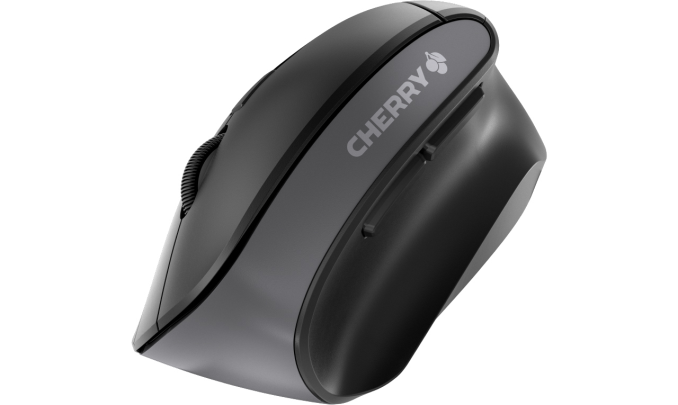
Normally, mice with fancy ergonomics come at a hefty price. This is not the case with the Cherry MW 4500, which will retail for €30, $35, or £30, depending on the region (and at price points like these, it will be interesting to buy the MW 4500 simply out of interest — is it really comfortable to use?). The mouse will be covered by a two-year warranty.
Buy Cherry B.Unlimited AES Encrypted Wireless Keyboard and Mouse on Amazon.com
Related Reading:
- Cherry Launches MC 4900 Mouse with Fingerprint Reader, 1375 DPI Sensor
- Logitech Boosts Precision of G203 Prodigy Mouse to 8000 DPI via Firmware Update
- Logitech Launches the MX Ergo Trackball: Bringing Trackballs into 2017
- Logitech Launches G603 ‘Lightspeed’: 12,000 DPI Hero Sensor, 1 ms Polling, 500 Hrs Battery
- Corsair Launches Glaive RGB Mouse: 16,000 DPI, Interchangeable Grips, LEDs
More...
-
12-18-17, 11:40 AM #7650
Anandtech: Toshiba Samples eUFS Devices for Vehicles: Extended Temps & Reliability Fe
Toshiba this month announced that it had started sample shipments of the industry’s first automotive grade embedded UFS storage devices for ADAS and infotainment systems. The new eUFS chips offer capacities from 16 GB to 128 GB (with a 256 GB option coming in Q2 2018), can handle extreme temperatures and support numerous features designed to improve their reliability and ensure consistent performance.
The Toshiba eUFS storage devices for automotive applications are based on the company’s proven 128 Gb MLC NAND flash made using 15 nm process technology as well as an in-house developed controller. The devices are compliant with the UFS 2.1 HS-G3 specification, so they use two full-duplex HS-Gear3 lanes with 5.8 GT/s data transfer rate per lane and can offer a theoretical maximum bandwidth of 1200 MB/s. Toshiba does not share actual performance numbers of its eUFS devices (other than saying that sequential read performance of its 64 GB eUFS device is 170% higher than that of its 64 GB eMMC device) and given that it also does not disclose details about its controller, one can only wonder which of the solid-state storage solutions can actually hit the peak interconnection speed.
Toshiba’s eUFS devices are AEC-Q100 Grade 2 qualified, and can operate in extreme temperatures between -40ºC and 105ºC for prolonged amounts of time. Furthermore, they pack a number of features to improve general reliability and endurance, courtesy to the new controller and some other enhancements. In addition to performing regular NAND management (bad block management, error correction, wear leveling, garbage collection, etc), Toshiba’s eUFS controller monitors such things as P/E cycles endured by the cell, temperature and some other (which Toshiba does not disclose) and reports them to the host processor that may take some actions if needed . For example, if the built-in sensor detects that the temperature of the device exceeds 105ºC, it reports it to the controller, which starts to throttle the device to reduce the temperature and passes the notification to the host SoC for further actions. The controller also automatically performs the “refresh” function to extend data retention by moving data from cell to cell to keep charges at decent levels.
Samples of Toshiba’s eUFS automotive-grade storage devices are available to interested parties. Meanwhile, Toshiba intends to add a 256 GB eUFS solution (based on the same memory and controller) to the lineup sometimes in Q2. Since vehicles take a long time to develop, it will be a while before Toshiba starts commercial shipments of the products.Toshiba Embedded UFS Storage Devices for Automotive Applications 16 GB 32 GB 64 GB 128 GB 256 GB NAND Type 128 Gb MLC NAND, 15 nm Controller Developed in-house Interface UFS 2.1
two full-duplex HS-Gear3 lanes with 5.8 GT/s per lane
up to 1200 MB/sOperating Temperatures -40ºC to 105ºC
-40ºF to 221ºFQualification AEC-Q100 Grade 2 Health Status Monitor Yes Data Retention Yes, through "Refresh" feature Thermal Sensor Yes Voltage Memory 2.7 V - 3.6 V Interface 1.7 V - 1.95 V Package Type FBGA-153 FBGA-169 Width 11.5 mm 12 mm Length 13 mm 16 mm Height 1 mm 1.2 mm 1.6 mm Sample Availability December 2017 Q2 2018
Related Reading:
- Toshiba Samples New UFS 2.1 NAND: Up to 900 MB/s Reads For 2018 Smartphones
- SanDisk Launches SD and microSD for Industrial and Automotive: Extreme Temps, Upped Reliability
- Samsung Announces 256GB UFS Embedded Storage Solution
- Samsung Announces 128GB UFS Storage For Smartphones
- Toshiba and Qualcomm Set to Introduce UFS 2.0 Solutions in 2014
More...
Thread Information
Users Browsing this Thread
There are currently 46 users browsing this thread. (0 members and 46 guests)





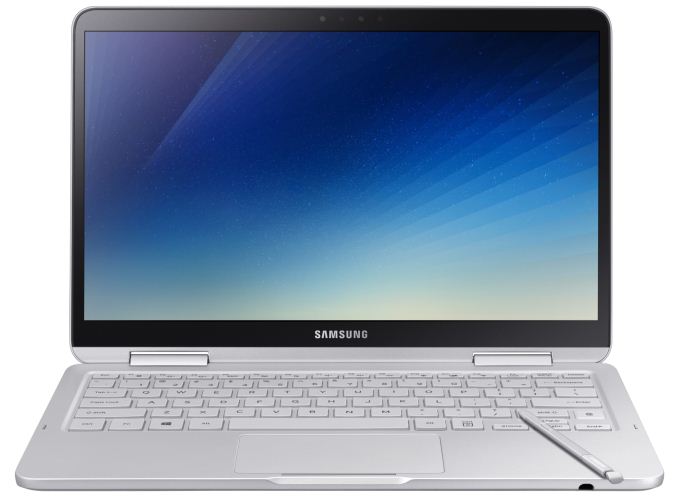
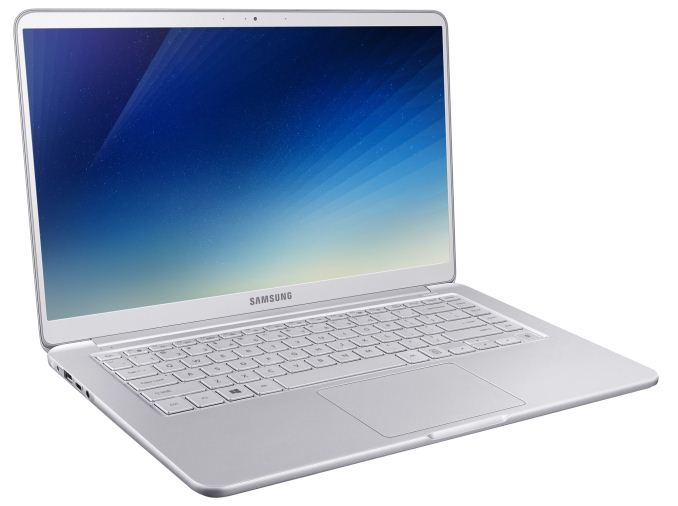

 Quote
Quote

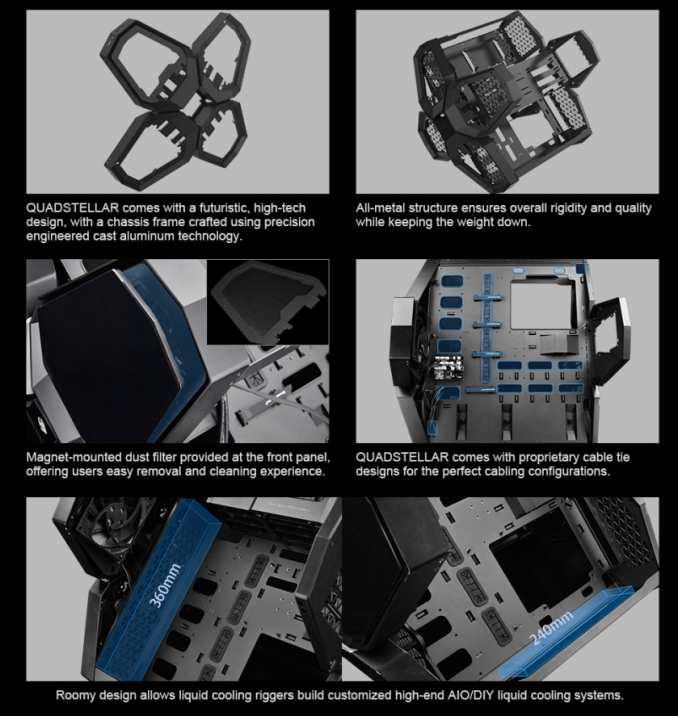
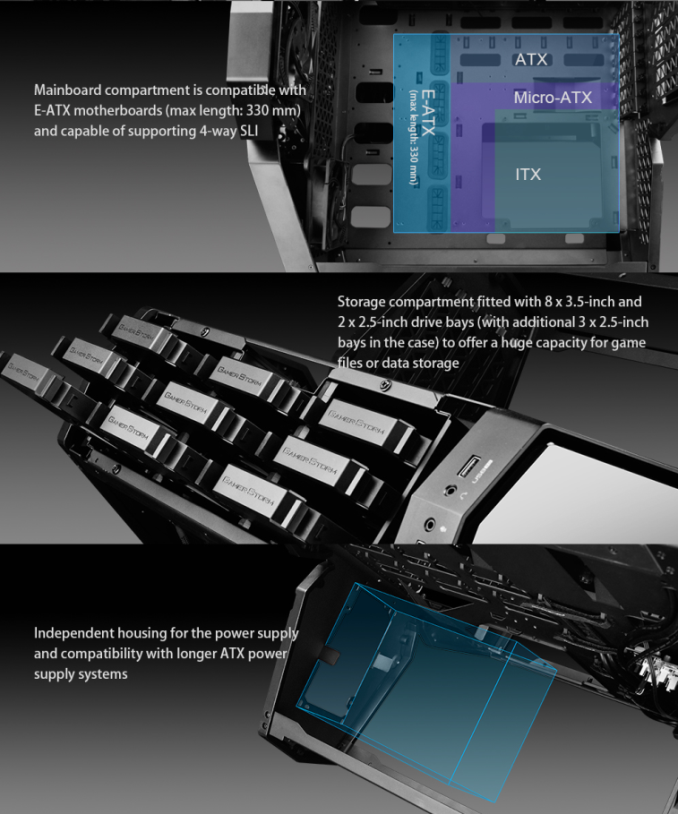
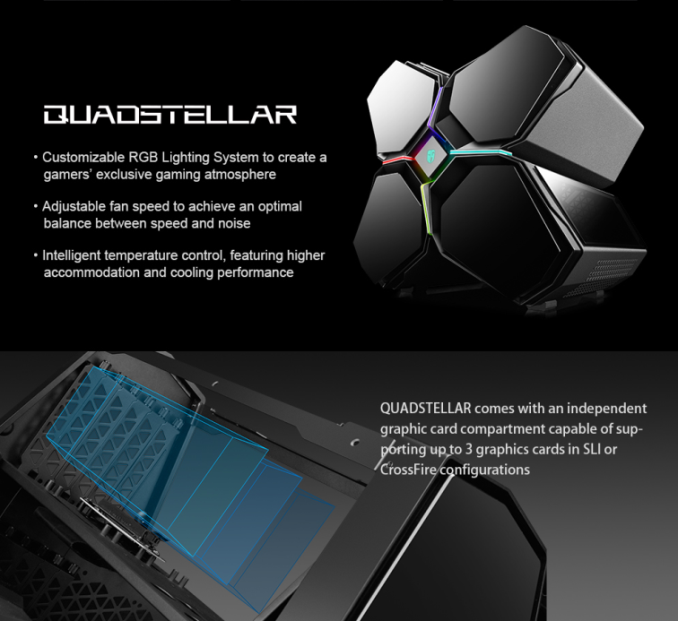

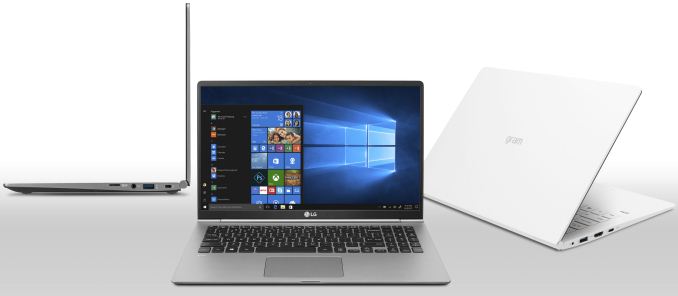
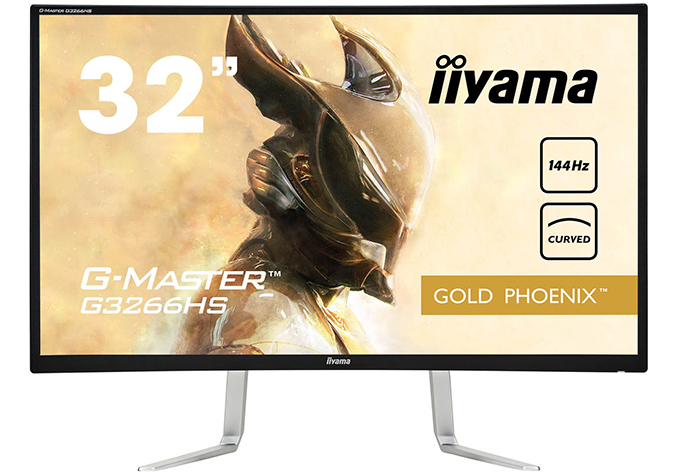

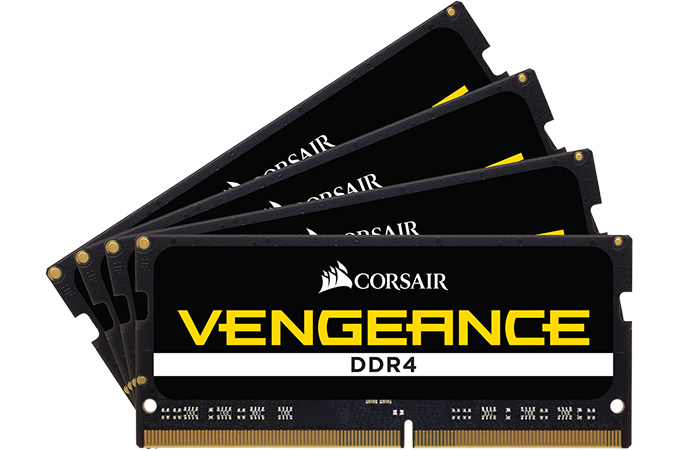
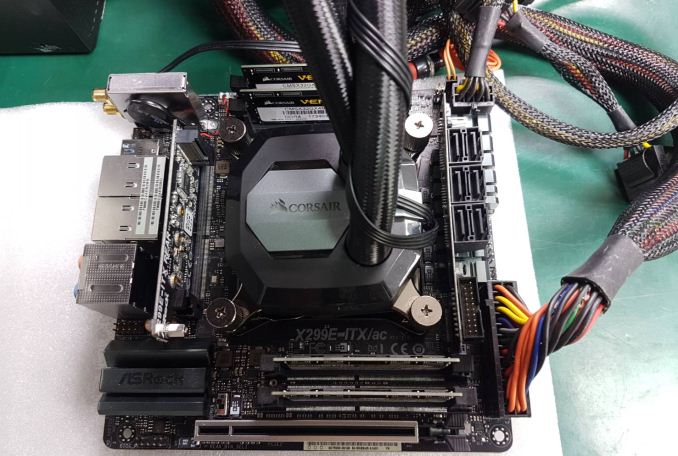
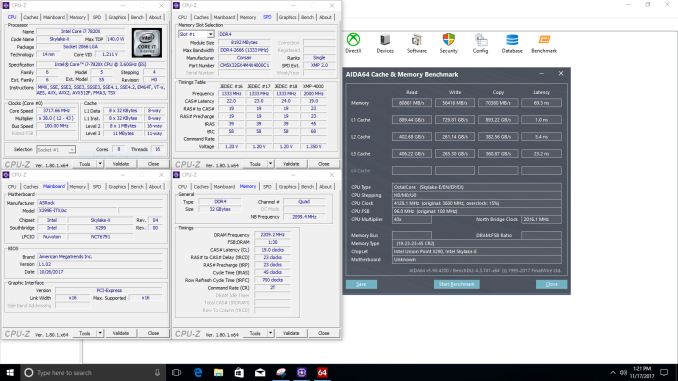
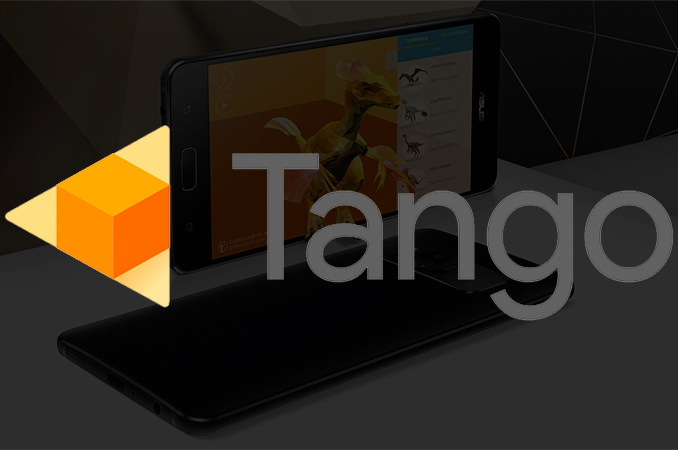
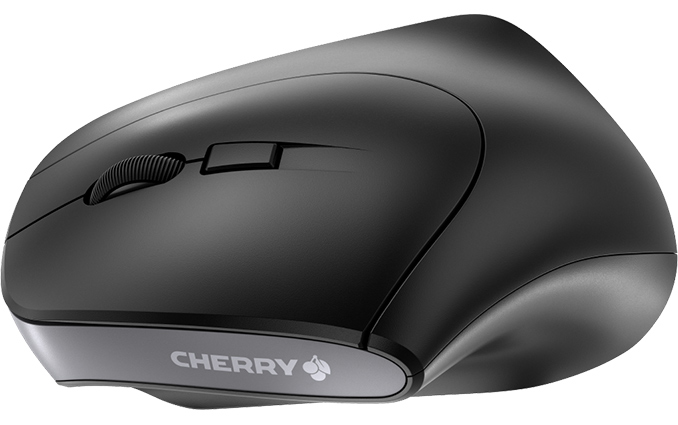

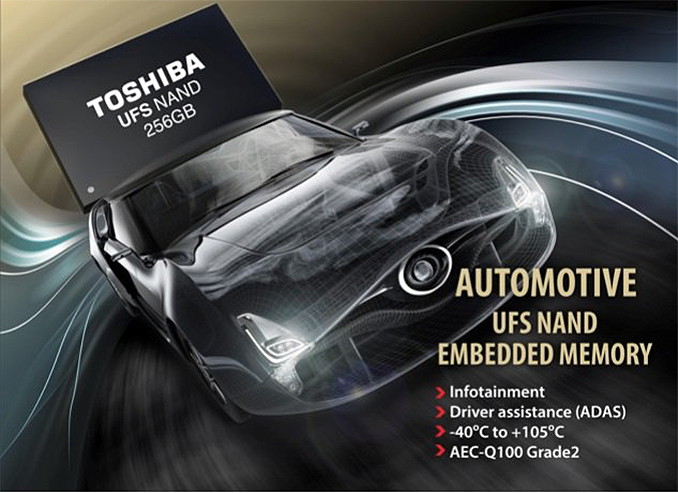

















Bookmarks